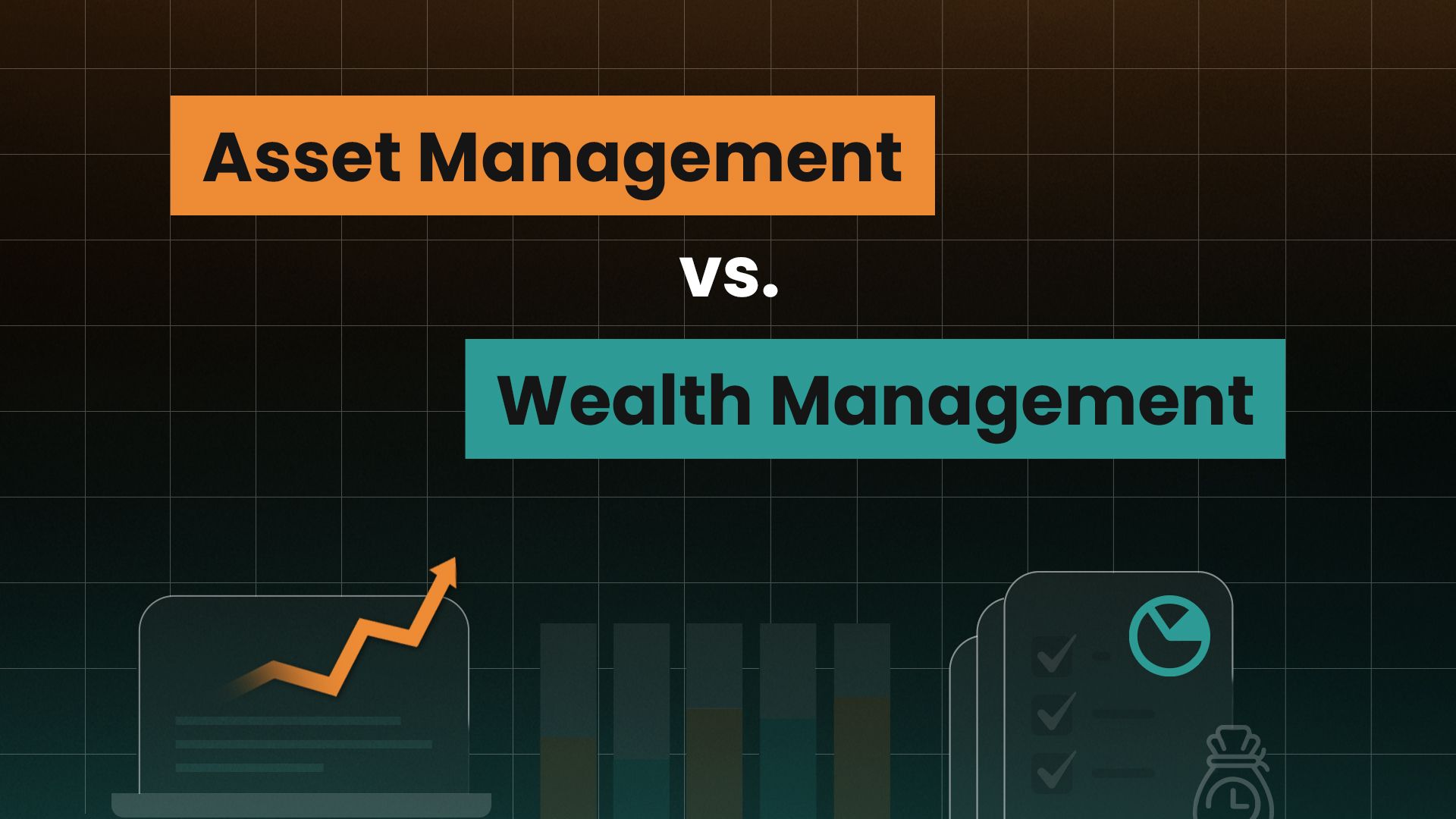

Finance
What Is P&L Management?
Published: February 29, 2024
Learn the importance of P&L management in finance and how it impacts business performance. Get insights on effective strategies and best practices. Discover how to optimize your P&L for success.
(Many of the links in this article redirect to a specific reviewed product. Your purchase of these products through affiliate links helps to generate commission for LiveWell, at no extra cost. Learn more)
Table of Contents
Introduction
Understanding the Essence of P&L Management
In the dynamic realm of finance, the effective management of profit and loss (P&L) holds paramount significance. P&L management serves as a crucial compass for businesses, guiding them through the complex terrain of financial decision-making. This comprehensive approach encompasses a spectrum of strategies and practices aimed at optimizing profitability and minimizing potential losses. By delving into the intricacies of P&L management, organizations can gain invaluable insights into their financial performance, thereby steering their operations toward sustainable growth and success.
The art of P&L management entails a meticulous examination of a company's revenue streams, cost structures, and overall financial health. It empowers businesses to dissect their financial data, identify trends, and make informed decisions that align with their overarching objectives. With a keen focus on maximizing profitability, P&L management enables organizations to navigate the ever-evolving economic landscape with acumen and agility.
At its core, P&L management encapsulates the essence of financial stewardship, requiring astute planning, vigilant monitoring, and strategic adaptation. By embracing this multifaceted discipline, businesses can fortify their fiscal resilience and fortify their competitive edge in the market. As we embark on this journey to unravel the intricacies of P&L management, we will explore its fundamental principles, delve into its pivotal components, and elucidate the strategies that underpin its efficacy. Join us as we navigate the terrain of P&L management, unraveling its significance and unveiling the strategies that drive financial prowess.
What is P&L Management?
Profit and Loss (P&L) management, also known as income statement management, is a strategic financial practice that encompasses the planning, monitoring, and analysis of a company’s revenue and expenses. It serves as a compass for businesses, providing a comprehensive overview of their financial performance over a specific period. At its essence, P&L management offers a panoramic view of a company’s ability to generate profits and control costs, thereby shaping its financial trajectory.
Within the framework of P&L management, businesses scrutinize their income statement to assess their operational efficiency, revenue generation, and expense management. This process involves a meticulous examination of revenue streams, including sales, investments, and other sources of income, juxtaposed against various categories of expenses, such as production costs, operating expenses, and taxes. By juxtaposing these elements, organizations can gauge their net profitability and pinpoint areas that warrant strategic intervention.
Moreover, P&L management serves as a barometer of a company’s financial health, offering stakeholders, investors, and decision-makers critical insights into its performance. By analyzing the income statement, businesses can identify trends, assess the impact of strategic initiatives, and make informed decisions that bolster their financial resilience. This practice not only fosters transparency and accountability but also empowers organizations to recalibrate their strategies in alignment with their overarching goals.
Ultimately, P&L management is a linchpin of financial prudence, equipping businesses with the tools to navigate economic fluctuations, capitalize on opportunities, and mitigate potential risks. It fosters a culture of financial acumen, where data-driven insights steer decision-making and pave the path for sustainable growth. As we unravel the layers of P&L management, we will delve deeper into its pivotal role in shaping financial strategies and fortifying the fiscal foundations of businesses.
Importance of P&L Management
The significance of Profit and Loss (P&L) management transcends mere financial bookkeeping; it serves as a linchpin of strategic decision-making and financial prudence for businesses across diverse industries. By embracing P&L management as a cornerstone of their operational framework, organizations can harness a myriad of benefits that resonate across their entire ecosystem.
Strategic Decision-Making: P&L management empowers businesses to make informed decisions that are rooted in financial insights. By scrutinizing revenue streams and cost structures, organizations can chart a course that optimizes profitability and aligns with their overarching objectives. This strategic clarity enables businesses to allocate resources judiciously, capitalize on growth opportunities, and navigate economic uncertainties with resilience.
Performance Evaluation: The income statement, a core component of P&L management, serves as a barometer of a company’s financial health and operational efficiency. It provides stakeholders and decision-makers with a comprehensive snapshot of the organization’s performance, enabling them to gauge its trajectory and identify areas for improvement. This transparency fosters accountability and drives a culture of continuous improvement within the organization.
Financial Resilience: P&L management equips businesses with the tools to fortify their financial foundations and weather market fluctuations. By proactively monitoring revenue and expenses, organizations can identify potential risks and implement preemptive measures to mitigate them. This proactive stance fosters resilience, enabling businesses to navigate challenges and capitalize on opportunities with agility.
Investor Confidence: Transparent and well-managed P&L statements instill confidence in investors and stakeholders, showcasing a company’s commitment to financial stewardship and sustainable growth. By demonstrating a robust P&L management framework, businesses can enhance their credibility and attractiveness to potential investors, fostering long-term partnerships and investment opportunities.
Operational Efficiency: Through P&L management, organizations can identify inefficiencies in their cost structures and operational processes. This insight enables them to streamline operations, optimize resource allocation, and enhance overall efficiency, thereby bolstering their competitive edge in the market.
Embracing P&L management as a strategic imperative empowers businesses to navigate the complexities of the financial landscape with acumen and foresight. By leveraging the insights gleaned from P&L analysis, organizations can steer their operations toward sustainable growth, resilience, and enduring success.
Components of P&L Management
Profit and Loss (P&L) management comprises a constellation of interwoven components that collectively shape a company’s financial narrative and strategic trajectory. Understanding these components is pivotal to unraveling the intricacies of P&L management and leveraging its insights to drive informed decision-making and sustainable growth.
Revenue Streams: At the heart of P&L management lies a comprehensive analysis of a company’s revenue streams. This encompasses revenue from sales, investments, royalties, and other sources, offering a panoramic view of the organization’s income-generating activities. By dissecting revenue streams, businesses can identify the most profitable avenues and capitalize on growth opportunities.
Cost of Goods Sold (COGS): The cost of goods sold represents the direct costs associated with producing goods or services. It encompasses expenses such as raw materials, labor, and manufacturing overhead. Analyzing COGS is integral to understanding the profitability of specific products or services and optimizing production processes.
Operating Expenses: Operating expenses encompass a spectrum of costs incurred in the day-to-day operations of a business, including rent, utilities, salaries, marketing expenses, and administrative costs. Managing and optimizing operating expenses is pivotal to enhancing cost efficiency and bolstering profitability.
Gross Profit: Gross profit is derived by subtracting the cost of goods sold from total revenue. It serves as a fundamental metric of a company’s profitability and operational efficiency, offering insights into the core profitability of its products or services.
Net Profit: Net profit, also known as the bottom line, reflects the residual profit after deducting all expenses from total revenue. It encapsulates the overall financial performance of the company, serving as a pivotal indicator of its fiscal resilience and profitability.
Financial Ratios: P&L management involves the calculation and analysis of financial ratios, such as gross profit margin, net profit margin, and return on investment. These ratios offer nuanced insights into a company’s financial health, operational efficiency, and return on investment, guiding strategic decision-making and performance evaluation.
Variance Analysis: Variance analysis entails comparing actual financial performance with budgeted or projected figures. This practice enables businesses to identify discrepancies, assess the impact of strategic initiatives, and recalibrate their financial strategies to align with their goals.
By comprehensively dissecting these components, businesses can glean invaluable insights into their financial performance, operational efficiency, and growth potential. This holistic understanding forms the bedrock of strategic P&L management, guiding businesses toward prudent financial stewardship and sustainable success.
Strategies for Effective P&L Management
Effective Profit and Loss (P&L) management hinges on the implementation of strategic practices that optimize profitability, mitigate risks, and foster financial resilience. By embracing a holistic approach to P&L management, businesses can navigate the complexities of the financial landscape with acumen and foresight, steering their operations toward sustainable growth and enduring success.
1. Data-Driven Decision-Making: Leveraging data analytics and financial insights is pivotal to informed P&L management. By harnessing robust financial reporting and analysis tools, businesses can glean nuanced insights into their revenue streams, cost structures, and overall financial performance, thereby guiding strategic decision-making.
2. Cost Optimization: Rigorous scrutiny of cost structures and operational expenses is integral to effective P&L management. By identifying inefficiencies, streamlining processes, and optimizing resource allocation, businesses can enhance cost efficiency and bolster their bottom line.
3. Revenue Diversification: Expanding and diversifying revenue streams mitigates dependency on a single source of income, fostering resilience and long-term sustainability. Businesses can explore new markets, products, and strategic partnerships to broaden their revenue base and capitalize on diverse growth opportunities.
4. Budgetary Discipline: Adhering to a well-defined budgetary framework is pivotal to effective P&L management. By establishing clear budgetary guidelines, monitoring variances, and recalibrating strategies as needed, businesses can align their financial activities with their overarching goals and optimize resource allocation.
5. Scenario Planning and Risk Mitigation: Anticipating potential risks and devising contingency plans is integral to effective P&L management. By conducting scenario analyses and preemptively mitigating risks, businesses can fortify their financial resilience and navigate uncertainties with agility.
6. Performance Metrics and KPIs: Establishing key performance indicators (KPIs) and performance metrics enables businesses to monitor their financial performance and operational efficiency. By setting clear benchmarks and tracking progress, organizations can drive continuous improvement and align their activities with strategic objectives.
7. Cross-Functional Collaboration: Fostering collaboration between finance, operations, and other functional areas is pivotal to effective P&L management. By fostering a cohesive approach to financial stewardship, businesses can leverage diverse expertise and perspectives to drive holistic financial strategies.
Embracing these strategies empowers businesses to fortify their P&L management framework, steering their operations toward sustainable growth, profitability, and enduring success. By fostering a culture of financial acumen and strategic agility, organizations can navigate the complexities of the financial landscape with resilience and foresight.
Conclusion
Profit and Loss (P&L) management stands as a cornerstone of financial prudence and strategic acumen, guiding businesses through the labyrinth of revenue generation, cost optimization, and fiscal stewardship. This comprehensive discipline encompasses a myriad of components, strategies, and practices that collectively shape a company’s financial narrative and trajectory. By delving into the intricacies of P&L management, businesses can glean invaluable insights into their financial performance, operational efficiency, and growth potential, thereby steering their operations toward sustainable success.
Embracing P&L management as a strategic imperative empowers businesses to make informed decisions rooted in financial insights, fortify their financial resilience, and foster a culture of continuous improvement. By scrutinizing revenue streams, optimizing cost structures, and leveraging data-driven insights, organizations can chart a course toward sustainable growth and enduring profitability. Moreover, the strategic practices underpinning effective P&L management, such as budgetary discipline, risk mitigation, and performance measurement, serve as catalysts for prudent financial stewardship and operational agility.
As businesses navigate the dynamic landscape of the global economy, the significance of P&L management reverberates as a linchpin of strategic decision-making and financial resilience. By embracing the multifaceted components and strategies of P&L management, organizations can fortify their fiscal foundations, capitalize on growth opportunities, and navigate uncertainties with acumen and foresight.
In essence, P&L management transcends mere financial bookkeeping; it embodies the essence of financial stewardship, strategic foresight, and operational resilience. By weaving the principles of P&L management into the fabric of their organizational framework, businesses can navigate the complexities of the financial landscape with prudence and agility, steering their operations toward sustainable growth and enduring success.
As we journey through the terrain of P&L management, unraveling its intricacies and unveiling its strategic imperatives, businesses are poised to embrace a culture of financial acumen, strategic agility, and enduring profitability.














